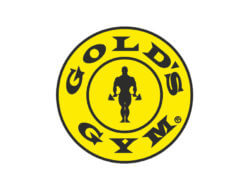March 12, 2019
The Big (Tech-Enabled) Shift: Turning Healthcare Consumers into Customers
 Consumerism was the hot topic at this year’s HIMSS conference in Orlando and at the JP Morgan conference. Attendees debated whether 2019 will mark the year healthcare finally tips toward the consumer.
Consumerism was the hot topic at this year’s HIMSS conference in Orlando and at the JP Morgan conference. Attendees debated whether 2019 will mark the year healthcare finally tips toward the consumer.
Evidence of rising consumerism abounds. Giant retail businesses like CVS, Walmart and Apple offer healthcare services at scale. Moreover, providers increasingly deliver care in convenient retail settings or via alternative technologies like telemedicine.
Facing growing financial responsibility for funding their healthcare needs, patients are using their nascent consumer skills to purchase healthcare services. When possible, they’re shopping for care services and coverage, seeking lower prices, greater convenience, better service and tangible value.
Two significant barriers remain, however, before consumerism can attack the core elements of current healthcare delivery business models:
- Healthcare consumers lack the pricing information necessary to act as true customers;
- The industry lacks the infrastructure and market mechanisms needed to engage consumers as customers.
Healthcare stands at the precipice of a new era of consumer-driven growth. Overcoming these barriers is a prerequisite for success. To facilitate this shift, leading healthcare IT companies are establishing market-based business models that enhance buyer-seller connectivity and the overall consumer experience.
Innovative companies are developing transparency tools that enable consumers to “shop” for healthcare services more easily. They’re building devices, apps and platforms that bolster healthcare’s consumer-facing infrastructure.
New technologies offer a golden opportunity for providers and payers to connect directly to consumers. Smart health companies are working to position themselves advantageously in anticipation of healthcare’s impending consumerism tsunami. They know that engaging customers and meeting their personalized wants, needs and desires will differentiate winners from losers.
Consumers vs Customers: A Distinction with a Difference
Since World War II, competition for consumer dollars has fueled robust economic growth and stimulated the innovations that shape our modern world. Today, consumer spending accounts for roughly 70% of total US GDP. (1)
Consumerism has not infiltrated healthcare because patients typically do not guide their care delivery nor pay their care costs. Negotiated and government-designed arrangements between payers and providers control care delivery and payment. Governments and employers are the real customers, not the patients. They pay the bills for the care that patients consume.
 As a consequence, healthcare principals execute transactions without consumers acting as customers. Patients visit doctors, doctors prescribe care, patients receive care, and third parties pay for that care. In normal markets, buyers and sellers exchange powerful signals regarding quality, price and service. Healthcare transactions sever this buyer-seller communication, exacerbating fragmentation and failure.
As a consequence, healthcare principals execute transactions without consumers acting as customers. Patients visit doctors, doctors prescribe care, patients receive care, and third parties pay for that care. In normal markets, buyers and sellers exchange powerful signals regarding quality, price and service. Healthcare transactions sever this buyer-seller communication, exacerbating fragmentation and failure.
Absent market signals from consumers, health companies optimize perverse incentives imbedded within American healthcare’s peculiar and complex payment formularies. Fee-For-Service (FFS) payments reward activity, not outcomes. Consequently, healthcare’s payers and providers neglect consumers, misallocate resources and generate enormous waste. The result is bloated, error-prone healthcare service delivery with out-of-control costs.
Where there is waste, there is entrepreneurial opportunity. As consumers accept greater control of their care choices and greater responsibility for funding their care, health companies will win their business by offering higher-quality services and greater convenience with transparent pricing.
Payers and providers must take consumerism more seriously as the percentage of healthcare spend controlled by patients is rising. Consumer dollars devoted to direct healthcare spending, deductibles (2) and to health savings accounts (3) are increasing significantly.
As healthcare consumers become price-sensitive, they act as customers and apply their instincts for value-based purchasing. For example, price-sensitive healthcare consumers schedule elective surgeries during off-hours and/or pay cash to lower prices. They price-shop for commodity services like MRIs. They flex their purchasing muscles when buying health insurance through state health insurance markets and Medicare Advantage plans.
Healthcare consumerism is accelerating with demographic change. Millennials, now the largest segment of the U.S. population, are less committed to traditional healthcare delivery channels than their elders. Half live without a primary care physician. Moreover, they’re insatiable users of the digital technologies and devices that power new service offerings. They’re not happy with the current system and open to experimentation.
Healthcare’s future will be consumer-driven and technology-enabled. The expansive entrepreneurial activity dedicated to consumer-directed health testifies to healthcare’s changing market dynamics.
Technology Enablers
Better information leads to better healthcare purchasing. In the battle for consumers’ hearts and wallets, health companies are developing technologies and services that enhance consumer capabilities and experiences. They’re taking manual, high-cost processes and turning them to digital processes. They’re also building delivery channels that create more intense engagement and more satisfying outcomes.
 In facilitating consumerism, healthcare tech companies strive to do the following: improve transparency, affordability and choice; facilitate payment and decision-making; enable on-demand access (apps, portals and telemedicine); customize / individualize treatment; and enhance wellness, prevention, shared decision-making, engagement and adherence.
In facilitating consumerism, healthcare tech companies strive to do the following: improve transparency, affordability and choice; facilitate payment and decision-making; enable on-demand access (apps, portals and telemedicine); customize / individualize treatment; and enhance wellness, prevention, shared decision-making, engagement and adherence.
Companies addressing these consumer needs are emerging in sizable numbers and attracting strategic investment. They segment into these five categories:
- Pricing / transparency solutions;
- Coaching / wellness platforms;
- Payment tools;
- Tele / virtual health access; and
- Consumer tech
Activity in each segment is robust. Let’s survey them individually.
Pricing / Transparency Solutions
Rx Savings Solutions uses transparency tools and algorithms to give health plan members and employees tailored clinical and pricing options for their prescriptions.
Vitals facilitates choice and transparency with a database of patient reviews for doctors, clinics and hospitals, etc. It also offers patients cash rewards for choosing lower cost providers.
HealthGrades applies advanced analytics and scheduling solutions to give consumers information about providers and facilitate easy scheduling.
Coaching / Wellness Platforms
Noom uses its smartphone app to help people make healthier lifestyle and diet decisions, monitor progress and provide personalized guidance and support to enhance engagement.
Onlife is a B2B service that offers a personalized wellness platform for members. Family, friends, community resources and co-workers can be enlisted via the platform to bolster support and encouragement.
Virgin Pulse is also a B2B service that works with employers in supporting wellness, health, lifestyle and fitness goals for employees. The platform integrates employee data from various sources, ranging from health assessments to wearable devices, to assess and monitor needs and progress.
Nutrimedy offers enhanced nutrition care by connecting patients and consumers with registered dietitians to provide education, support and counseling for over 50 conditions through a web platform and mobile app.
 Payment Tools
Payment Tools
Simplee offers a payment platform that facilitates consumer-friendly billing and payment. Patients are given options and paths that enhance transparency, affordability and engagement while reducing frustration, complexity and delays.
CarePayment helps patients manage medical expenses, particularly out-of-pocket, by giving them finance options before, during or after care. Once enrolled in a payment program, CarePayment facilitates the billing and payment experience.
visitPay incorporates consumer finance and lending insights to improve patient billing by facilitating transparency, simplicity and a better payment experience.
Tele / Virtual Health Access
American Well serves health plans by connecting clinicians and patients over secure video for urgent care visits. The company’s new direct-to-consumer app, Amwell, offers physician visits without need for appointment.
Valued Relationships (VRI) provides 24-hour emergency response, fall detection, activity / vitals monitoring and medication / care management via phone call or medical alert system. The service encourages connection and conversation with care monitoring staff.
MDLive provides on-demand access to physicians via phone, app or online for patients who would otherwise seek care in ER or urgent care settings.
Zipnosis offers a telemedicine platform for providers to deliver virtual care via video, phone or chat for a wide range of conditions, from simple acute to chronic care management. Its online adaptive interview directs patients to the most appropriate care delivery channels, enhancing clinical efficiency and patient convenience.
Pager is a single-entry-point platform that enables patients to connect to and chat with nurses and doctors via video, schedule appointments and fill prescriptions.
Consumer Tech
Apple CEO Tim Cook recently declared, “Apple’s largest contribution to mankind will be in improving people’s health and well-being.” (4) The Apple watch and (soon) AirPods monitor activity and health, giving providers and health companies access to unprecedented levels of personal data.
Amazon is implementing a “surround” healthcare strategy. At the center, Amazon’s virtual assistant Alexa can engage and monitor people for health and wellness in the home and senior living centers while supporting staff in hospitals and clinics. PillPack gives Amazon online pharmaceutical delivery capabilities while WholeFoods gives Amazon the opportunity to focus on nutrition and retail care.
HabitAware developed a “smart” bracelet to help people manage compulsive behaviors. Users can train their bracelet to interrupt patterns of body-focused repetitive behaviors with a light vibration, enabling them to make healthier choices. HabitAware won the 2018 Minnesota Cup and included on Time magazine’s best inventions of 2018.
Healthcare Gets into Consumer Shape
In 1965, a weight lifting club named Gold’s Gym launched in Venice Beach, California. Over the next decade it struggled and changed hands several times. Then fortune struck. The 1977 movie Pumping Iron, starring future California Governor Arnold Schwarzenegger, became a surprise blockbuster and Gold’s Gym became famous.
 Gold’s licensed its name and began franchising as the first national fitness company. In the decades since, other big-box gyms, including LA Fitness, Planet Fitness and 24-Hour Fitness, have followed suit, gained prominence and increased the segment’s capture of the American consumer’s discretionary spending.
Gold’s licensed its name and began franchising as the first national fitness company. In the decades since, other big-box gyms, including LA Fitness, Planet Fitness and 24-Hour Fitness, have followed suit, gained prominence and increased the segment’s capture of the American consumer’s discretionary spending.
More recently, boutique clubs like SoulCycle, OrangeTheory and CorePower have emerged as fitness powerhouses, now holding around 40% of the market. Their niche strategies appeal to specific consumer needs and preferences. Members are committed, loyal and fanatical brand ambassadors.
Historically, consumer businesses emerge, gain traction, invite competition, segment and consolidate. Products and solutions win by doing a better job meeting consumers’ individual needs, then scaling rapidly.
As consumerism takes hold in healthcare, boutique solutions that generate more intense engagement will complement “big-box” service providers. Many of these boutique health companies will be technology-based. Others will require technology support. For example, the fitness boutique MindBody supports member engagement with tech-enabled scheduling, training and wellness tools.
Digital tools and platforms are fueling the rise of healthcare consumerism. They engage customers in their health and wellness. They simplify transactions and care delivery. They make prices and quality information easily available.
The American innovation engine is attacking healthcare. “Smart” money is flowing into health tech and tech-enabled services in record numbers. Investment translates into market power and reshapes industries. Retail giants and nimble start-ups are developing tools and business models to meet consumer health needs. It’s a potentially massive market.
Healthcare consumers are waking up. They’re demanding the service, experience and ease they expect from other industries. Technology will give them power. Innovators are positioning to give consumers the health and healthcare services what they want when, where and how they want them.
That future is at our fingertips.
Sources
- https://www.thebalance.com/components-of-gdp-explanation-formula-and-chart-3306015
- https://www.healthsystemtracker.org/brief/increases-in-cost-sharing-payments-have-far-outpaced-wage-growth/#item-start
- http://www.devenir.com/health-savings-account-assets-22-2017/
- http://time.com/5472329/apple-watch-ecg/
Co-Author
 Jill Frew, Managing Director Cain Brothers, is a senior banker focused on Healthcare Information Technology and Digital Health practices. Ms. Frew joined Cain Brothers in 2006 and has over 20 years of experience advising both public and private companies in a variety of M&A, capital raising, and strategic advisory transactions. Ms. Frew has executed transactions across several verticals over her career, including payer services, managed care, providers, and HCIT. Ms. Frew is a member of the Firm’s President’s Advisory Council.
Jill Frew, Managing Director Cain Brothers, is a senior banker focused on Healthcare Information Technology and Digital Health practices. Ms. Frew joined Cain Brothers in 2006 and has over 20 years of experience advising both public and private companies in a variety of M&A, capital raising, and strategic advisory transactions. Ms. Frew has executed transactions across several verticals over her career, including payer services, managed care, providers, and HCIT. Ms. Frew is a member of the Firm’s President’s Advisory Council.
Ms. Frew began her investment banking career at Wachovia Corporation as an Analyst in the M&A Group. She then worked at Wheat First Securities, focusing on public offerings and M&A advisory work for clients, primarily in the healthcare industry. Ms. Frew then spent three years as head of the Corporate Development group of PhyAmerica, where she led the M&A activity for this $1 billion healthcare services. In 1995, Ms. Frew co-founded Townsend Frew & Co., a healthcare-focused M&A boutique based in Charlotte that was later acquired by Edgeview Partners. Ms. Frew earned a BS in Finance from Utah State University and an MBA from The College of William & Mary.





